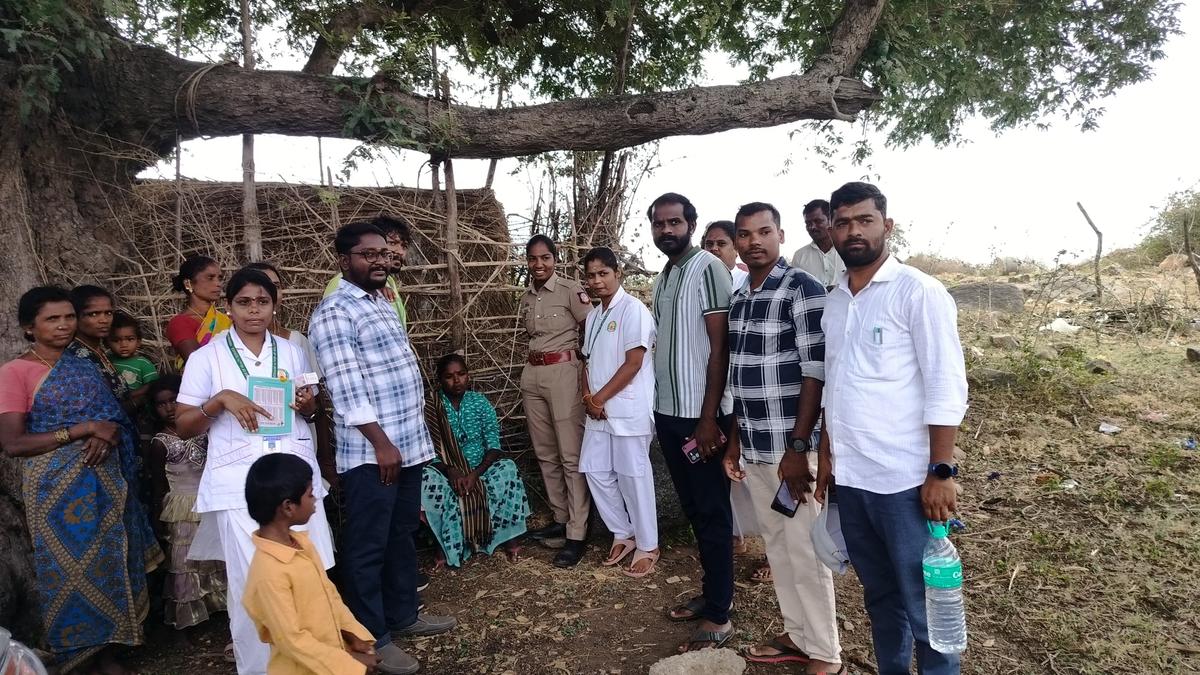Science
Urgent Medical Intervention Saves Pregnant Woman’s Life in India

A severely anaemic pregnant woman, identified as Malli, faced life-threatening conditions due to a dangerously low haemoglobin count of just 3 grams per decilitre (g/dL). Malli, a resident of the remote village of Kadamakuttai in Bettamugilalam Panchayat, was forcibly transported to a hospital after avoiding medical care for her tenth pregnancy. Despite the tragic loss of her child, doctors managed to save Malli’s life.
Malli’s situation came to the attention of Dr. C. Rajesh Kumar, Block Medical Officer of Denkanikottai, during a routine health camp in May 2023. During his visit, he learned from local women that Malli and her family consistently evaded the monthly health screenings. “They vanished every time we conducted the medical camp,” Dr. Rajesh Kumar recalled.
After witnessing the gravity of Malli’s condition, Dr. Rajesh Kumar and his team made a surprise visit to her home on July 18, 2023. The family responded with hostility and refused any medical assistance. Upon examination, Malli was found to have significant swelling and signs of pregnancy-induced hypertension, prompting Dr. Rajesh Kumar to alert local health authorities.
In a coordinated effort, C.Dinesh Kumar, the district collector, and Dr. Ramesh Kumar, Deputy Director of Health, were notified about the urgency of the situation. The tahsildar provided support to mobilize resources from local law enforcement to ensure Malli’s transfer to a medical facility. However, when the medical team returned the following day, the family had gone into hiding.
After an extensive search, Malli and her husband were located. It became evident that Malli feared for her children’s wellbeing if she were to seek hospital care. After significant persuasion, she was eventually transported to Dharmapuri Government Medical College Hospital in a jeep. There, the medical staff were instructed to monitor her closely, and an Accredited Social Health Activist (ASHA) worker was assigned to provide continuous support.
Tragically, during her hospital stay, Malli’s foetus experienced an intrauterine death. Dr. Rajesh Kumar noted that without the medical intervention, Malli would not have survived. Since her admission, she has undergone blood transfusions and is now receiving further medical support.
In the wake of this incident, the Health Department is considering the implementation of contraceptive measures for Malli to prevent future health crises. This case underscores the urgent need for improved access to healthcare in remote areas and highlights the challenges faced by families in similar situations. The local health authorities continue to work towards ensuring that such critical interventions are accessible to all, particularly in underserved communities.
-

 World5 months ago
World5 months agoSBI Announces QIP Floor Price at ₹811.05 Per Share
-

 Lifestyle5 months ago
Lifestyle5 months agoCept Unveils ₹3.1 Crore Urban Mobility Plan for Sustainable Growth
-

 Science4 months ago
Science4 months agoNew Blood Group Discovered in South Indian Woman at Rotary Centre
-

 World5 months ago
World5 months agoTorrential Rains Cause Flash Flooding in New York and New Jersey
-

 Top Stories5 months ago
Top Stories5 months agoKonkani Cultural Organisation to Host Pearl Jubilee in Abu Dhabi
-

 Sports4 months ago
Sports4 months agoBroad Advocates for Bowling Change Ahead of Final Test Against India
-

 Science5 months ago
Science5 months agoNothing Headphone 1 Review: A Bold Contender in Audio Design
-

 Top Stories5 months ago
Top Stories5 months agoAir India Crash Investigation Highlights Boeing Fuel Switch Concerns
-

 Business5 months ago
Business5 months agoIndian Stock Market Rebounds: Sensex and Nifty Rise After Four-Day Decline
-

 Sports4 months ago
Sports4 months agoCristian Totti Retires at 19: Pressure of Fame Takes Toll
-

 Politics5 months ago
Politics5 months agoAbandoned Doberman Finds New Home After Journey to Prague
-

 Top Stories5 months ago
Top Stories5 months agoPatna Bank Manager Abhishek Varun Found Dead in Well









